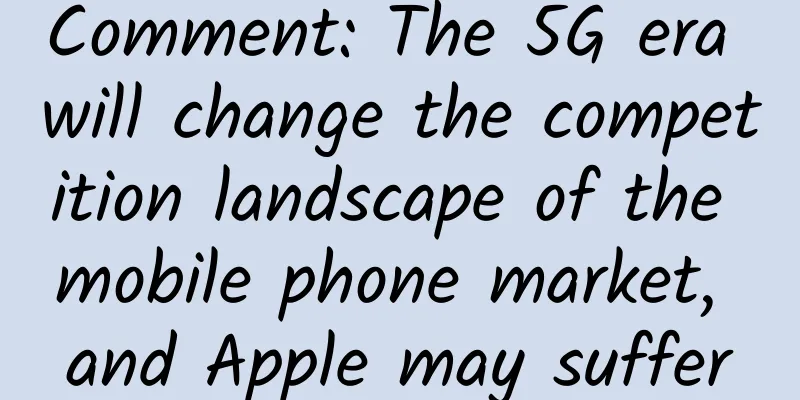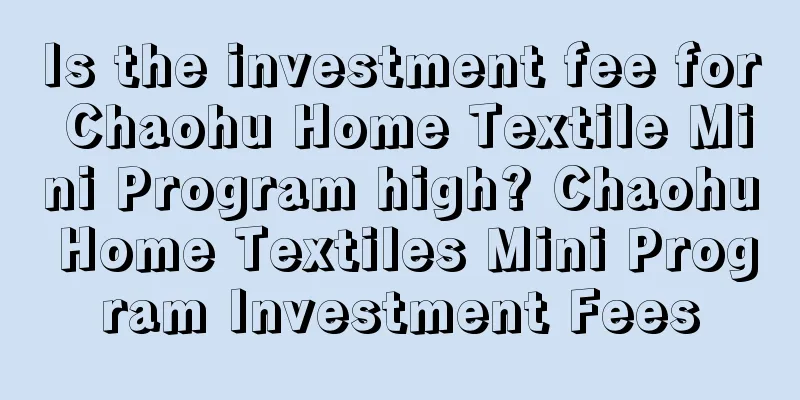Comment: The 5G era will change the competition landscape of the mobile phone market, and Apple may suffer

|
Market research company Canalys recently released its latest report, showing that China's smartphone market performance continued to improve in the third quarter, with shipments reaching 97.8 million units, exceeding the 97.6 million units in the second quarter. Among them, Huawei's shipments in the third quarter increased by 66%, and its market share increased to 42%, while Apple, Ov, and Xiaomi's shipments all declined year-on-year.
The global smartphone industry is entering an era of "brutal competition". First, the market growth is shifting to developing countries, whose low consumption capacity has led the entire industry into price competition. Second, the 5G era has officially begun, and existing mobile phone brands and supply chain companies will face a new track. If they are half a step slower than their competitors, they may be eliminated. This is not alarmist. The fate of Nokia, Motorola and a number of Japanese companies is a lesson. There are many factors that contributed to Huawei's sudden rise in the domestic market. First, the US government's suppression of Huawei has provided the best advertising for the latter, allowing some consumers to buy Huawei phones to express their support. But this is not the main reason. Secondly, Huawei has high-end P series and Mate series, and has outstanding performance in shooting, battery and system fluency. Technology is the main reason for Huawei's popularity. Thirdly, Huawei also has the mid-to-low-end Honor series. Huawei's biggest advantage is its core technology. It can use some advanced technologies in mid-to-low-end mobile phones, making these products more cost-effective. If we look at the global market, we can better understand the cruelty of price competition. The current incremental markets are mainly India, Southeast Asia, Brazil and other regions. In India, in the second quarter of 2019, Xiaomi controlled the Indian low-end mobile phone market with a market share of 28%. This is because the mobile phones sold by Xiaomi in India are basically locally produced, and local production also reduces production costs, thus gaining an advantage in price competition. At the same time, in the second quarter of 2019, OnePlus mobile phones accounted for 30% of the Indian high-end mobile phone market, surpassing Samsung (28%) and Apple (25%). Although Samsung still ranks first in the global market share, competitive pressure has forced it to make a surprising decision recently. Samsung will entrust Chinese companies to produce 60 million low-end and mid-range mobile phones each year, which is equivalent to 20% of Samsung's annual output. Samsung Electronics is the only manufacturer in the world that has a complete solution from chips to networks to terminals. However, it is under siege by Chinese low-end and mid-range mobile phones in the global market. For example, it has been surpassed by Xiaomi in India and fallen behind Transsion in Africa. Therefore, Samsung's main purpose of letting Chinese companies produce OEM products is to reduce costs, increase price competitiveness, and maintain market share. Under the impact of Chinese companies, Apple and Samsung are obviously no longer calm, and both are involved in price competition. What they are most concerned about is how to maintain their current position after the advent of the 5G era. In other words, while price competition is becoming increasingly fierce, they are facing the challenge of mobile phone technology iteration. In the 5G era, Samsung, Apple and Huawei all have self-developed core processors and baseband chip technology. Among them, Huawei and Samsung have launched 5G version SoC chips with integrated 5G baseband chips. Apple has acquired Intel's mobile baseband chip team, but the launch of self-developed baseband chips is expected to be after 2020. Chinese operators have already launched 5G services, but Samsung's share in the Chinese market is small, and Apple does not have 5G models for the time being. Therefore, Huawei's advantage is temporarily ahead. Since Huawei's 5G chips are not sold to the outside world, Samsung will compete with Qualcomm for the 5G chip market of other Chinese brands, and is launching an offensive. Relatively speaking, Apple is in a disadvantageous position. Although the US market will not launch 5G commercial services in the short term, Apple can only compete in the Chinese and European markets where 5G is first launched. Politics is also changing the ecology of the mobile phone industry. The US government's sanctions on Huawei will help Japanese and Korean companies to participate more deeply in the Chinese mobile phone supply chain. Japan's sanctions on South Korea will also have an impact on Samsung's supply chain. Electronic companies in Taiwan are seizing new opportunities in the 5G era of the mainland, while Huawei is vigorously cultivating local suppliers. Therefore, major supply chain adjustments and technological competition are happening at the same time. When the dust settles in the future, Apple and US component companies may be hurt in the new round of industry competition. |
<<: How to name the APP version number correctly and elegantly?
>>: Mobile QQ chat history can finally be migrated! Mobile QQ new version experience
Recommend
6 Things I Wish I Knew When I Wrote My First Android App
My first app was terrible. In fact, it was so ter...
Others with 0 followers can easily get 100,000 likes on Douyin. What is Douyin’s recommendation algorithm?
Tik Tok 's decentralized algorithm gives ever...
2020 full network marketing promotion methods!
Since the rise of online marketing, online market...
Domestic 5G spectrum allocation is initially determined: the official plan is expected to be released in September
Judging from the current situation, the three ope...
How to effectively and accurately reach users with activities
In fact, in the user-operated activity-based mark...
66 must-read tips for Taobao operations
What is Taobao SEO? What are PV, UV, impressions,...
A comprehensive analysis of product operations!
If a product is produced but cannot fully reach u...
[Taught by Irvin Yalom] Group therapy records and interviews | 100% restoration of the scene × 10 video lessons
【Taught by Irvin Yalom】Group Therapy Records and ...
Detailed explanation of Android Native memory leak detection solution
Author | yeconglu A complete Android Native memor...
How to review an event you have organized? From which aspects?
This question comes from a reader's question,...
Liu Xinwu Introduction: What are the common SEO misunderstandings? How to avoid them?
For every novice SEOer, it is of course a great p...
How much does it cost to produce the Kunming beauty mini program? What is the price for being an agent of Kunming Beauty Mini Program?
Kunming beauty mini program agents are generally ...
Xi'an Tea Tasting Contact Information I strongly recommend this election venue. I won't tell ordinary people about it.
The contact information of Xi'an tea tasting ...
The most comprehensive guide to gamification user growth strategies
01. “AARRR” Theoretical Definition As the penetra...
Analysis of Zhihu’s operation and promotion strategies!
On August 12, 2019, Zhihu completed its F round o...









